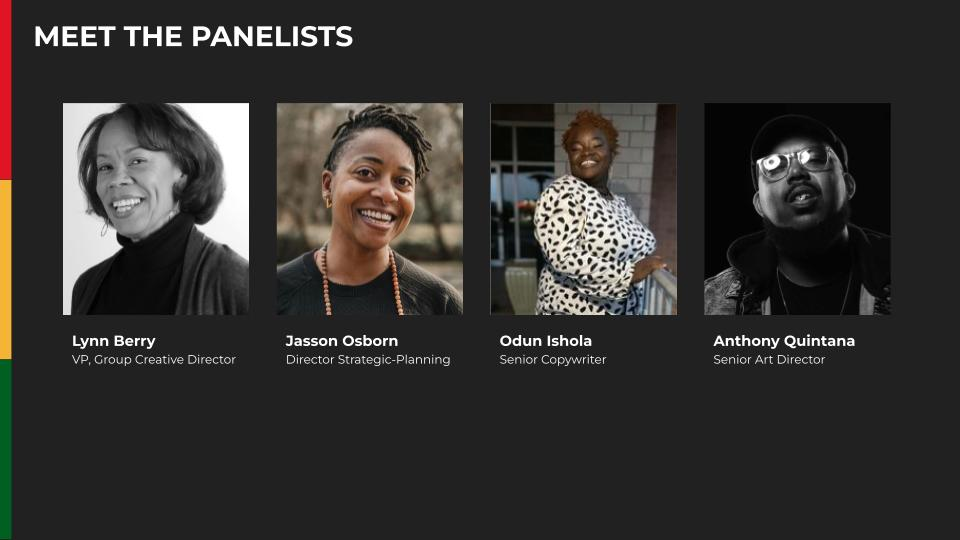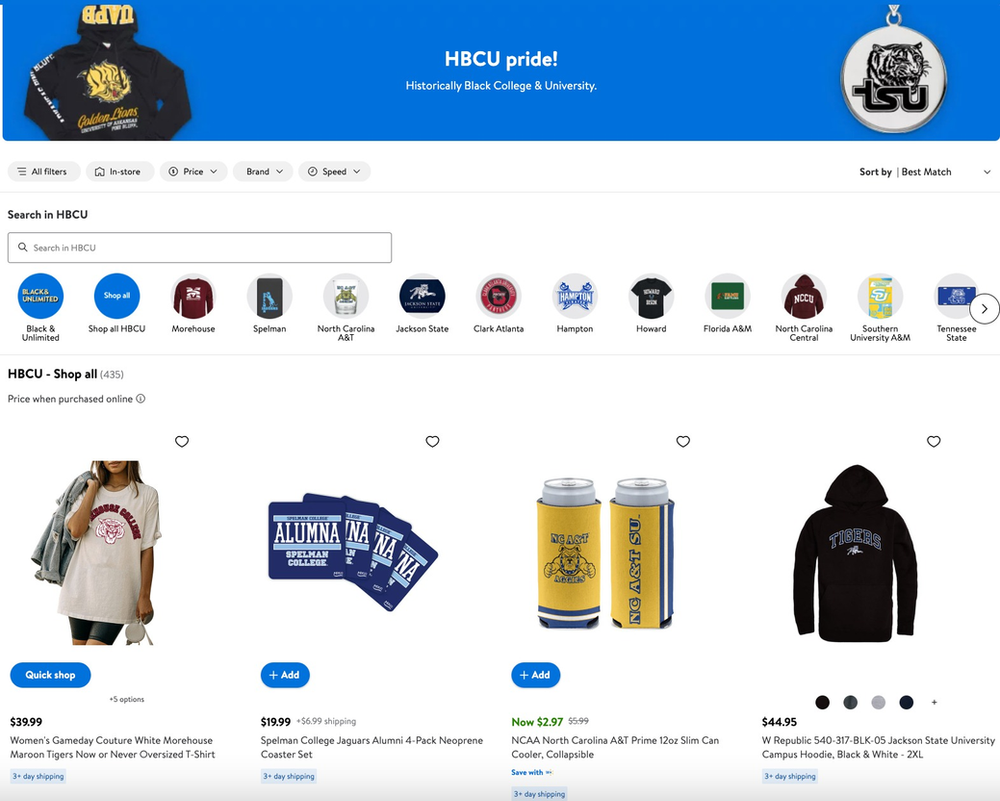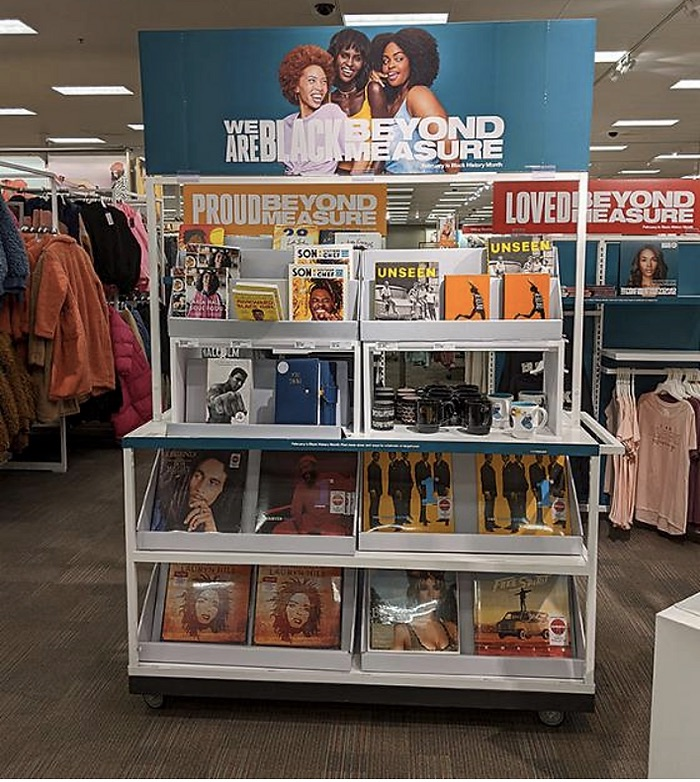Educational opportunities inspired by Black History Month don’t end after February. Working towards being a better ally is a 365-day effort.
With Black History Month spotlighting conversations around inequity, how can companies keep making progress towards better workplaces that welcome, embrace, and uplift all employees? And looking at the marketing industry at large, what are the changes that need to happen, both in the workplace and in the creative output?
To foster a more inclusive environment at The Mars Agency, we’re continually exploring different avenues to enrich our employees in ways that will be reflected in the work we create.

One of our approaches has been the creation of a Diversity, Equity & Inclusion committee and its offerings like the Multicultural Advisory Panel, which reviews our agency work, and “Lunch & Learn” discussions.
For Black History Month, the committee hosted a “Lunch & Learn” discussion that provided a brief history on the representation of Black people in advertising, followed by a panel talk. The panel featured four Martians discussing challenges facing the industry today as it works to create more inclusive workplaces and some of the companies making strides with their efforts. Lynn Berry, VP, Group Creative Director; Jasson Osborn, Director of Strategic-Planning; Odun Ishola, Senior Copywriter; and Anthony Quintana, Senior Art Director, also explored the topic of career growth for Black employees.

The group acknowledged that fostering an inclusive work culture requires more than just bringing people into the space. Jasson raised the importance of awareness and representation when putting in the work to cultivate inclusivity.

She highlighted Walmart’s initiative to remedy their lack of Black employee retention and better support career growth within the company. Walmart continually builds partnerships with Historically Black Colleges and Universities (HBCUs) through multiple efforts: hosting the inaugural HBCU Student Summit, where participants attend professional development workshops; stocking HBCU merchandise in stores and online (pictured above); and allocating $2.5 million in grants to support advancement opportunities for workers without college degrees.
These efforts are also a great way to encourage Black students to pursue careers in marketing. Although not all companies have the financial capabilities of Walmart to direct towards community-based initiatives, there are still opportunities to reach students. “My biggest advice is to start really early,” offered Ishola. “Sometimes, college is too late. By that point, most people have made their minds up career-wise. Speak to high schoolers or people in trade schools. Find people with transferable skills. It didn’t click that there were opportunities in marketing and advertising for me.” Ishola was halfway through her journalism degree in college before she realized she could pivot to marketing, she explained.
Lynn noted that funding for the arts is often the first thing that gets cut in public schools due to budget concerns. These cuts remove a potential path for many Black students to explore their creativity and understand how those skills can transfer to marketing and advertising. With these outlets removed, “We’re not in [the students’] eyes. If we could get into their communities early, we could bring in great people,” she says.
One opportunity for companies to look into is partnering with local youth-focused organizations to bring high school students into the office, introduce them to different career paths, and show them work they might not have been considering. Last February, The Mars Agency had the privilege of welcoming 10 high schoolers from our Detroit office’s partner organization, New City Kids, for a tour and presentation on agency life. Martians from different roles across the agency spoke with the teens, introducing them to the variety of career opportunities available within the marketing and advertising world.
In the pursuit of cultivating the next generation of Black marketing and advertising professionals, the group also discussed the importance of Black mentors within the industry. It’s critical to not only make space at the table, but also to encourage growth when bringing in talent, they said. “Having Black mentors gave me the confidence to speak up, empowered me to fully show up as myself, and allowed me to really lean into the unique voice that I have,” Odun explained.
Allowing unique voices to shine in the workplace is essential for developing better marketing work as well. Having more perspectives at the table builds opportunities for more representative outputs. Quintana reflected on his time working in travel tourism and the need for greater representation in the ads they were producing. “See where you have the opportunity to effect change,” he encouraged. “In tourism, a lot of the ads catered to middle America or white Americans. When I got involved with the ads, I took the opportunity to mix it up, whether by adding a mixed couple or a Black couple. Even though the statistics show that more white Americans go to these travel destinations (resorts, cruises, etc.), we should challenge those statistics and ask, ‘How can we change that with those ads?’”
Including Black History Month in Your Marketing Strategy
Quintana gave a nod to Target’s marketing efforts during Black History Month. “Target has done a really good job of advertising towards the Black community.

The products are still there front and center after February.” (Check out our 2022 report on Target’s “always on” approach to DEI.) This reiterates the importance of an “always on” strategy for marketing. “We can’t treat DEI and Black history like a New Year’s resolution: We’re gung-ho at the beginning of the year, then we fade off. It should be a year-long endeavor,” Lynn noted.
There is also a need for intention when it comes to marketing during Black History Month. Companies shouldn’t be putting out work just to check a box. “I think of Black History Month less as a time for commercialization and more of a time to actually do work. We’re going to take those 28 days and make something out of it,” said Odun. “There are human beings here that deserve a place at the table and are worthy of being heard. It’s time to leverage and capitalize on that, and really bring all of those voices to the forefront, carrying it into the rest of the year.”
For brands, retailers, and agencies looking to embrace this strategy, it’s important to continually ask these questions:
- What are you doing internally to ensure that the work developed is representative and reflective of the audience you’re speaking to?
- Who is your audience? Are you being mindful about stereotypes or biases that may exist around this community?
- Are you having meaningful conversations with the client about how to advance DEI objectives in relation to the program?
To encapsulate the “always on” DEI strategy at The Mars Agency, the Multicultural Advisory Panel was assembled to ensure all the work we are developing is culturally competent. The panel reviews work from all types of activations, not just programs related to cultural celebrations or recognitions (e.g. Black History or Pride Month). This panel provides the opportunity for us to help both our brand and retailer partners achieve their objectives to become more authentically representative of their consumers. There are so many stories and perspectives out there to share and learn from that can enrich both the work and ourselves.